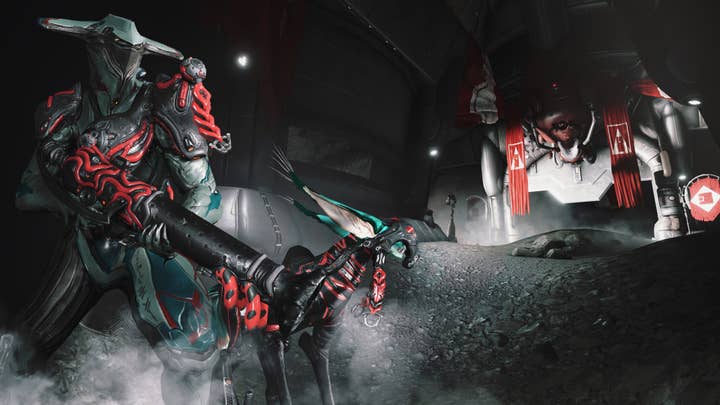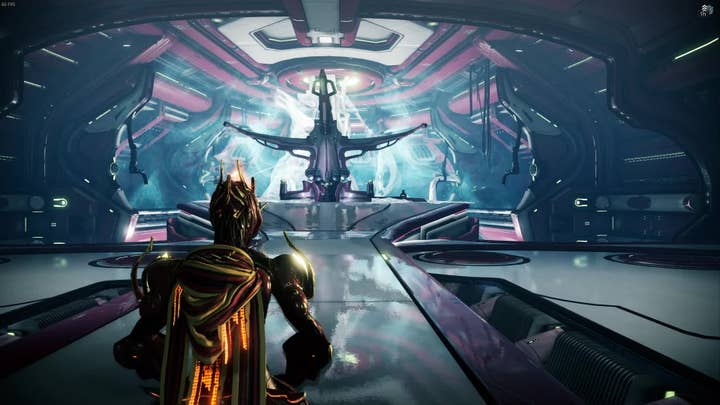"Nothing beats age old word-of-mouth between players"
As Warframe beats record numbers after 3.5 years at market, Meridith Braun explains how to keep a 'hail Mary' healthy
Last week, over three and a half years after its initial release, Digital Extremes' free-to-play shooter Warframe broke its concurrent player record with expansion The War Within, hitting Steam's top three on the weekend of release, recording a maximum of 68,530 players online at once and logging an incredible 1.2 million hours of playtime in a single day. Across PC and the more recent Xbox One and PS4 versions of the game, over 1 million of the 26 million players who have registered since the game's 2013 launch had played by November's halfway point, beating all previous monthly unique records with a fortnight to go.
Those are impressive numbers, especially for a game at a point in its lifecycle where it could certainly be forgiven for slowing down - and it's no anomalous bump. Instead, a quick glance at SteamSpy's graphs for the game show a steadily increasing number of players for the game, as well as a very healthy schedule of updates, patches and big content drops. Rather than leeching users to other games as it ages, Warframe is going from strength to strength.

Meridith Braun, VP Publishing at Digital Extremes, says that it's been a tight compromise of strategies - resulting in a success which far exceeds the expectations of a game which was initially seen as something of a make or break exercise. Key to that, she says, has been a careful acquisition process, but not one which has come at the cost of long term curation and engagement of existing players.
"It's definitely a balancing act between catering development to new players and veterans of the game," Braun explains, "but after 3.5 years, the core of the game has grown so much that for new players there are literally hundreds of hours of missions, quests, customising and exploring game systems before they catch up to where veteran players are.
"Whilst many of our updates focus on adding new content and improving game systems that our veterans are most interested in, earlier this year we took a fresh look at the new player experience and released an update that refined some of the tutorials, updated the UI, tied quests together to help the lore flow better, and revamped the market for easier functionality. It was not our most played update, like The Second Dream or The War Within, but it served a long-tail purpose of making Warframe more inviting and easier to understand for new players. It helps them navigate to the really intricate depths of the game with the intent to retain them long-term."
"We spend very little compared to other free-to-play games that focus a large amount of their budgets on acquisition"
Polishing the tip of the spear is a tried and tested acquisition technique, but it's not usually a way of sidestepping the vast costs which many companies associate with gathering new players. Warframe's marketing, though, was forged in a crucible of necessity, at a time when budgets were almost non-existent. As a result, the studio has learned to maximise the gain from channels which deliver users without draining revenue, although the financial success of the game has also enabled them to operate in areas previously well beyond their price range.
"We spend very little compared to other free-to-play games that focus a large amount of their budgets on acquisition," says Braun. "Warframe was a passion project - the studio's 'Hail Mary' pass, if you will. There was barely budget to buy an account server for the game, let alone to spend on marketing at the time. We turned to viral everything to get the word out: live streaming, social media, Reddit, forums, PR, knocking on partner's doors for promotional opportunities. Once we launched in open beta and more players got a taste of the game, it was clear we had something unique on our hands. Since then our acquisition strategy has focused primarily on our update schedule and community involvement.

"We discovered early on that frequent significant updates - updates that added dramatic gameplay changes, enhancements and content, and transparency with our community, brought in droves of new players. Now that we have more wiggle room in our coffers, we work the usual acquisition channels - online CPA-focused advertising, social media, streaming, etc. - but nothing beats age old word-of-mouth between players telling their friends to join in on a game that only gets better and better over time."
What's perhaps even more unusual about the current high that Warframe finds itself riding upon is that it comes at a time when the AAA shooter market is crowded with a wide spread of very high quality competitors - many of which are under-performing at retail. The game's peak numbers come at a point when there are brand new Battlefield and Call of Duty games at market, as well as extremely well reviewed releases like the Titanfall and Dishonored sequels.
"Warframe was a passion project - the studio's 'Hail Mary' pass, if you will. There was barely budget to buy an account server for the game, let alone to spend on marketing at the time"
Braun very much sees free-to-play as playing a significant part in the difficulties which Warframe's boxed rivals are experiencing.
"I think we're seeing the F2P model disrupting the standard retail model for larger budget games," she says. "The continued rise of AAA-quality, free-to-play games coming to market - and their ability to fill the long gaps between large IP releases - is taking a bite out of the big game market. Just this year it was great to see F2P titles like Paragon and Paladins launch to great fanfare and numbers, I'm sure they both had some effect on the big budget FPS games alongside Warframe.
"It's hard to compete with free. Sure, we want people to eventually pay for the entertainment they're receiving - but when you have the ability to try out a game for free for as long as you want, a game with equally great production value, and then decide if it's a game that deserves your money, that's pretty stiff competition. The larger games also aren't built to be as agile and reactive to the market after they ship. Free games at their core are made to continually update and improve, offering incredible value and entertainment over a longer period of time."

Blizzard probably has a few things to say about the notion that free-to-play games offer the best long-term player engagement and responsive improvement, and Braun freely admits that games like Overwatch share that strategy of player curation. Warframe, she says, also offers something else, though. Because it wasn't a Blizzard game, born almost fully-fledged and slickly functional, early adopters have had the joy of watching it smooth out its rougher edges.
"When Warframe first launched it was a shell of the size of game it has become, and our players have stayed with our growth throughout its life-span. They enjoy taking the ride with us, being a part of the evolution, experiencing game development from the front seat. If you're not thinking about long-term engagement and game service at the heart of your game design as a good part of the future of gaming, you may have yet to come to grips with the dwindling projections of one-and-done games."
